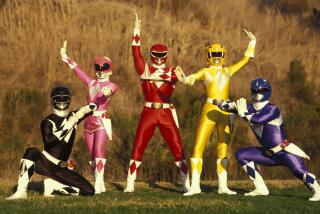U.S. Rangers Carry Out Time-Tested Strategies
- Share via
FORT EDWARD, N.Y. — “Don’t never take a chance you don’t have to,” today’s U.S. Army Rangers are taught.
And: “Let the enemy come till he’s almost close enough to touch. Then let him have it and jump out and finish him up with your hatchet.”
It’s not quite the way Maj. Robert Rogers put it in 1757, when muskets and tomahawks were the weapons of choice and the leader of Rogers’ Rangers wrote a guideline for woodlands warfare. But Rogers’ philosophy remains the combat catechism for U.S. Army Rangers and other special forces, including those fighting the war against terrorism in Afghanistan.
The modern Rangers’ No. 1 rule--”Don’t forget nothing”--is a boiled-down version of the first of Rogers’ 28 original orders, since edited, abridged and retrofitted into the 19 rules learned by today’s Army commandos.
The original rule started: “All Rangers are to be subject to the rules and articles of war; to appear at roll-call every evening, on their own parade, equipped, each with a firelock, 60 rounds of powder and ball, and a hatchet. . . . “
The rules cover everything from when to attack, sleep and eat to how to handle a captured enemy. They’re just as useful today in the mountains of Tora Bora as they were 245 years ago, military experts say.
“The principles of security, how you carry yourself on a patrol, those do not change,” said Lt. Col. David Pound, executive officer of the Army’s Ranger Training Brigade at Ft. Benning, Ga. “The close combat lessons that Rogers learned in the 1700s are just as applicable today.”
Rogers’ rules appear in the handbook that today’s soldiers are given when they arrive at Ranger school, and are posted at battalion headquarters, Pound said.
Rogers wrote his rules here on an island in the Hudson River 45 miles north of Albany. They made for a manual for fighting in North American forests, where European tactics led to several British disasters during the French and Indian War, fought from 1755-1763.
Nearly 200 years later they were resurrected in World War II by newly created American Ranger units, including those that stormed the French coast on D-Day. In the 1960s, the Green Berets incorporated Rogers’ rules into their training regimen.
Army Col. David Hackworth, looking to imbue an esprit de corps in the infantry battalion he commanded in Vietnam, required soldiers to carry copies of the rules he had printed on pocket-sized laminated cards; officers had to memorize the rules.
“These basics are the first things that soldiers forget--keeping your weapons clean, moving quietly, and so on,” said Hackworth, one of the nation’s most decorated foot soldiers. “If you can remember these simple rules, you can survive.”
Today, with Rangers in the news on several fronts--fighting in Afghanistan and portrayed in the film “Black Hawk Down”--there’s renewed interest in their history and in Rogers, said JoAnne and Richard Fuller, French and Indian War buffs from Ft. Edward.
Rogers wrote his rules while bivouacked on a nearby island named after him. History buffs and Rogers aficionados--including former American and British commandos--sometimes arrive looking for the spot they consider “hallowed ground,” Richard Fuller said.
Raised in New Hampshire in the 1740s, Rogers honed his skills roaming the Abenaki Indian trails of northern New England. In the 1750s, he recruited “ranging companies” made up of trappers and frontiersmen to scout and fight for the British.
Better suited for the region’s tangled wilderness than their more encumbered allies, Rogers’ men became so adept at guerrilla-style combat tactics favored by their Indian foes that the French placed bounties on the major and his Rangers.
But several of his forays nearly ended in disaster, with the Rangers suffering scores of dead, wounded and captured while Rogers made narrow escapes. After years of personal and financial problems, he died a pauper in England in 1795.
Hackworth said Rogers should be forgiven for his personal failures considering the fighting doctrine he bequeathed to future generations of soldiers.
“That guy has saved more lives than the smartest general,” he said.
More to Read
Sign up for Essential California
The most important California stories and recommendations in your inbox every morning.
You may occasionally receive promotional content from the Los Angeles Times.












